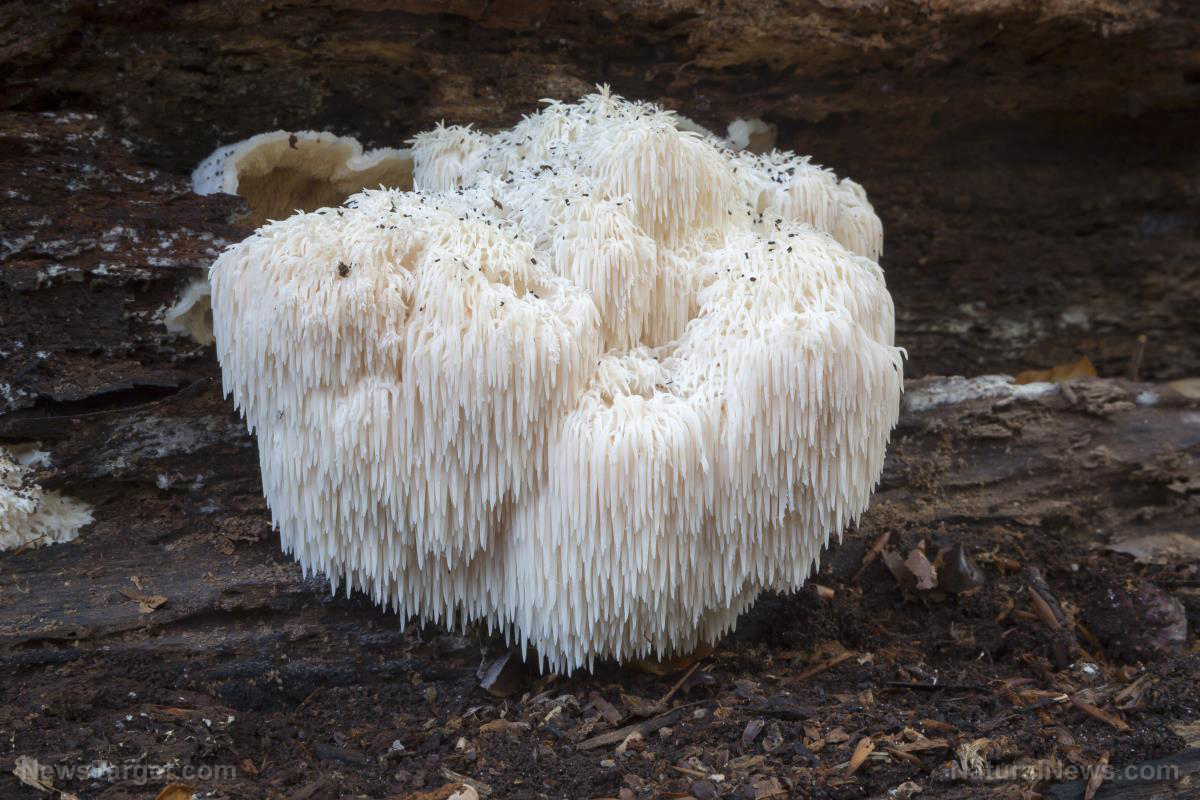Experts think there are more GIGANTIC ANIMALS on Earth yet to be discovered
03/01/2023 / By Zoey Sky

Back in 2020, experts first laid eyes on what may be the longest animal ever discovered. Researchers reported that they found a roughly 150-foot-long (45-meter) siphonophore in a deep-sea canyon off the Australian coast.
Because experts didn’t discover siphonophores until recently, it’s possible that there are more giant animals left to discover.
Large animals from the ocean and on land
Siphonophores live between about 2,300 and 3,280 feet (700 to 1,000 m) below the surface of the water. Each member of this group of species is made up of zooids, or lots of smaller animals that connect to form a long, string-like colony similar to a coral but swims freely in the ocean.
But you don’t always have to swim to the depths of the ocean to discover new large creatures.
In 2011, a previously undiscovered whale species washed up on a New Zealand beach. By 2021, experts identified the creature as a new member of the beaked whale family, a relatively unknown group of deep-diving whales that are seldom spotted alive.
The depths of the ocean continue to mystify searchers, but they know more about large animals living on land.
For example, African bush elephants are often spotted on the savanna. These mammals can stand up to 13 feet (4 m) high and weigh up to 11 tons (10 metric tons).
Elephants are the largest living land animals on Earth, and it is nigh impossible to miss other enormous, elephant-sized creatures living on the planet.
This could explain why most research into large land animals tends to lead to reclassifications instead of brand-new discoveries.
Back in 2017, experts reported that an isolated group of orangutans in Sumatra, an island in Indonesia, was a distinct species from other orangutans. The group of great apes was Tapanuli orangutans (Pongo tapanuliensis).
But unlike siphonophores deep in the ocean, humans already knew these orangutans existed. They also aren’t exactly giants with a height of less than five feet (1.5 m) tall.
Unfortunately, Tapanuli orangutans are considered “the most gravely endangered great ape species on Earth.” They may also be even closer to extinction than initially reported.
They occupy less than three percent of the habitat they did in the late 1800s. Because there are fewer than 800 Tapanuli orangutans left in Batang Toru, in North Sumatra, and the species may soon become extinct.
Aside from these animals, there is still no verified physical evidence for the existence of Bigfoot or other gigantic mythological monsters that are very different from other animals that have already been identified. (Related: MRI-based map of squid brains reveal cephalopods are just as smart as dogs.)
More massive titanosaur discoveries
Compared to siphonophores that have been discovered alive, the largest unknown terrestrial animals are often dug up.
Researchers are still reporting new discoveries about Earth’s geologic history and unearthing previously unknown giants in the fossil record. Some of the most recent discoveries include land giants that are a group of supermassive sauropod dinosaurs called titanosaurs or giant herbivores with long necks.
Paul Barrett, a paleontologist at the Natural History Museum in London, explained that titanosaurs can weigh as much as “six or seven fully grown bull African elephants.”
Some of the biggest titanosaurs were unearthed in Argentina. As of writing, they could be the title holders for the largest terrestrial animals on record.
While there is some ongoing scientific debate about their sizes, the heaviest and possibly potentially largest of all titanosaurs was likely Argentinosaurus.
Argentinosaurus was discovered in 1993. Based on its bones, experts think the dinosaur measured at least 115 feet (35 m) long and weighed up to 77 tons (70 metric tons).
But other discovered dinosaurs may soon take the crown from Argentinosaurus.
In 2014, experts announced the discovery of Patagotitan mayorum. It weighed at least 66 tons (60 metric tons) and has a length of about 122 feet (37 m). By 2021, scientists announced another titanosaur discovery that could be even bigger, but they have yet to fully excavate the specimen.
Barrett believes that there are more colossal titanosaurs waiting to be discovered. He added that the rate of these discoveries has increased along with “a broader upward trend in fossil discoveries.”
The bulk of earlier discoveries was done in places where the study authors’ publishing was based, such as in North America and Europe. But according to Barrett, within the last 30 to 40 years, that knowledge base has “spread much more widely internationally.”
Yet even with this increased rate of discovery, the evidence for giant extinct creatures isn’t always readily available. Argentinosaurus, one of the contenders for the largest dinosaur, is known only from at least a dozen bones.
Barrett added that the conditions to become a fossil are also rather difficult. Before an animal is preserved in rock, a lot of factors have to be met.
An animal’s bones must be completely buried quickly in specific conditions, like in material such as mud or sand. The animal also cannot be consumed as prey, dragged elsewhere by a predator, or eroded over time.
Barrett cited sauropods as an example. Because a sauropod can measure up to 30 meters (100 feet) long, its chances of getting buried and turned into a fossil are very low. There is a large chance of parts of a sauropod’s body sticking out and not getting buried completely and properly.
Researchers also don’t have a theoretical maximum size of a land creature.
If marine animals are included, blue whales (Balaenoptera musculus) are the heaviest animals on record. Blue whales have a maximum weight of at least 150 tons (136 metric tons). But they don’t have to hold their weight up on land as titanosaurs did.
Experts say that there must be a limit to how big animals can grow and “still support themselves under the weight of gravity and get enough energy to keep their massive bodies moving.”
It would be surprising to observe dinosaur discoveries make a sudden spike in terms of size, but paleontologists are open to having their expectations exceeded. After all, “tomorrow someone could find something even bigger,” concluded Barrett.
Visit WeirdScienceNews.com to read more articles about fascinating scientific discoveries.
Watch the video below to know more about interesting fossils from 300 million years ago.
This video is from the Country Dirt Kid channel on Brighteon.com.
More related stories:
A glimpse of the past: Photographer “reanimates” dinosaur skeletons through photographs.
Brazil dig unearths evidence of a new desert-dwelling dinosaur species.
Perfect predator: The T. rex’s stiff skull enabled it to SHATTER the bones of its prey.
Sources include:
Submit a correction >>
Tagged Under:
Archaeology, artifacts, blue whales, breakthrough, cool science, dinosaurs, discoveries, Ecology, environment, gigantic animals, land animals, marine animals, marine biology, research, sauropods, siphonophore, titanosaurs, weird science, zooids
This article may contain statements that reflect the opinion of the author
RECENT NEWS & ARTICLES
COPYRIGHT © 2017 DISCOVERIES NEWS




















